Hygiene in cleanrooms
- Wednesday 22 June 2022
- By: BOONS FIS
- Category: Hygiene equipment
What do we understand by a 'cleanroom'? In a literal sense this is a very clean room or work environment specifically designed to minimise or even eliminate contamination during the production process. Contamination can be caused by dust or fibres, airborne micro-organisms, fine dust, droplets or (chemical) vapours.
We mainly know cleanrooms from the development of semiconductors or medicines, or from laboratories or the biotechnology sector. But we can also take a look at the wider picture. Cleanrooms are also used to protect processes in industries such as biology, solar cell production and space travel. In recent years cleanrooms have also been gaining popularity in the food industry, for example to extend or guarantee the shelf life of fresh products. They also create the ideal environment for processing foods that have to be lactose- or gluten-free.
In general, increasingly strict quality requirements in many industries are requiring more stringent ambient conditions during production. As a consequence, there is an increasing need for such production to take place in a controlled environment. This explains why the use of cleanrooms has increased enormously in recent years.
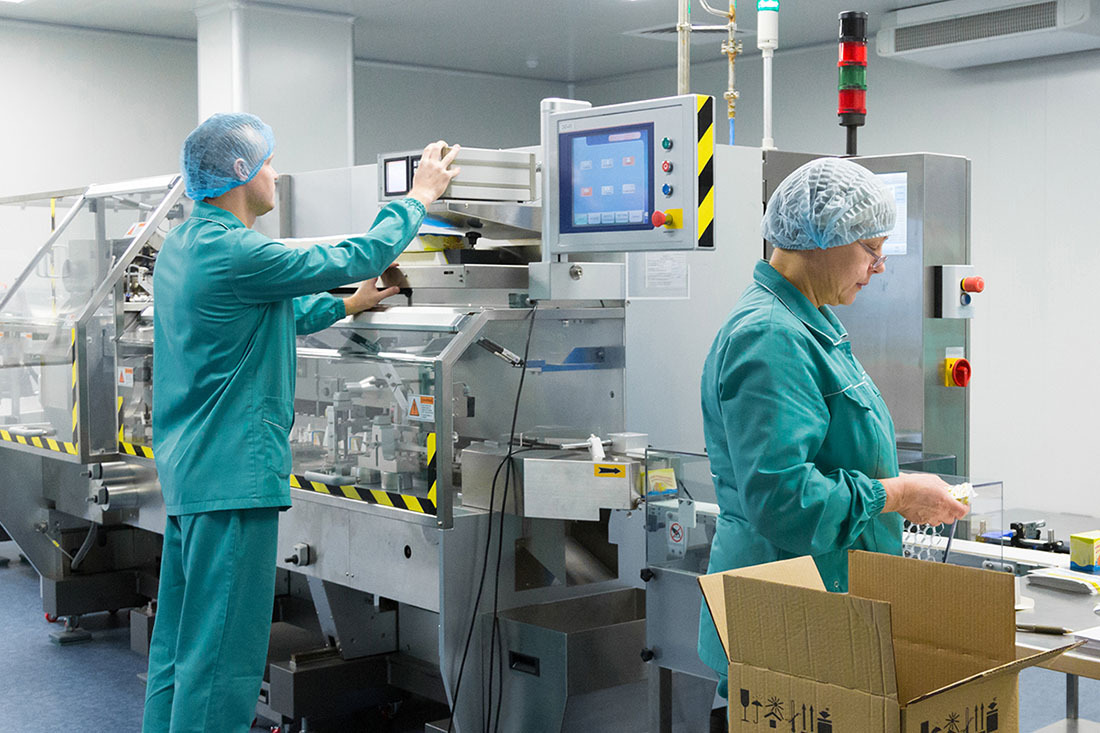
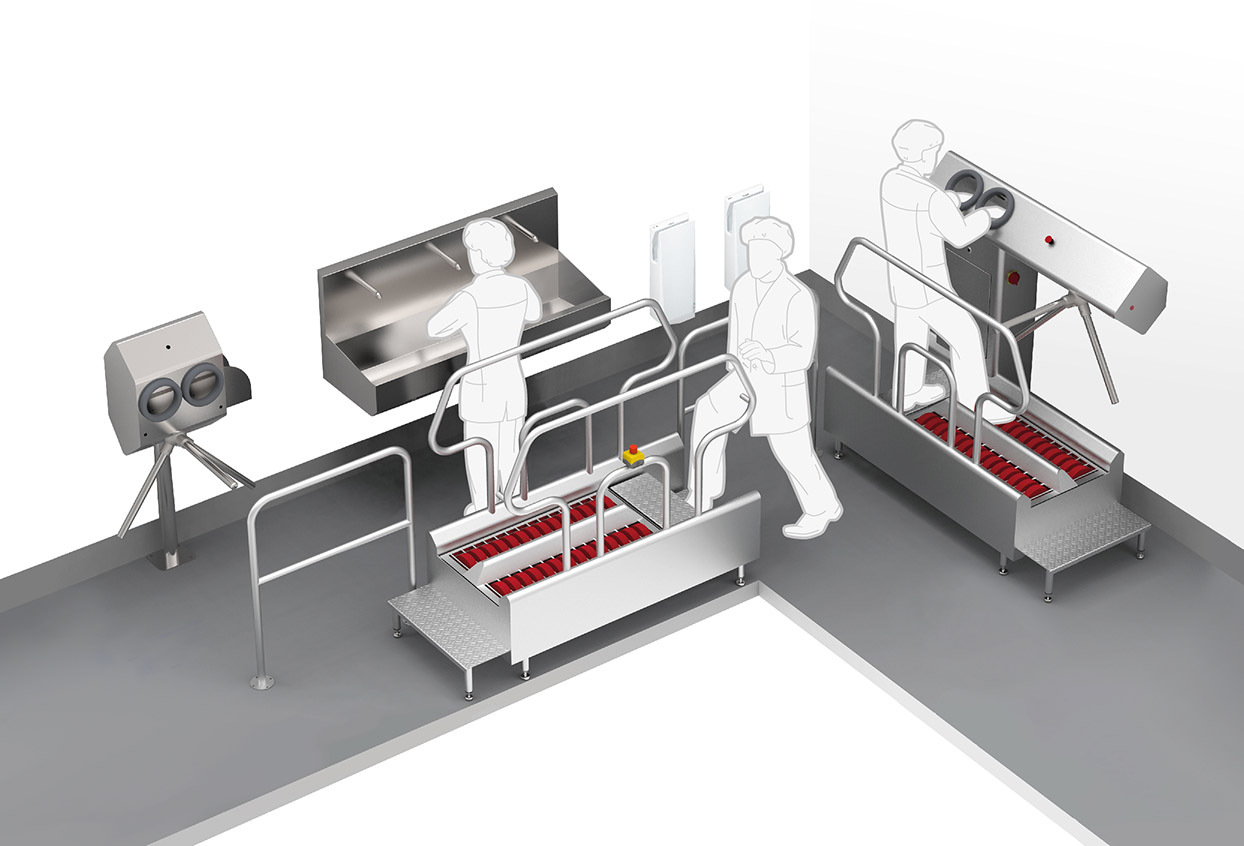
Employees in a cleanroom are required to adhere to strict precautionary measures. Depending on the regulations in the sector (or at the company), the procedures concerning cleanrooms differ regarding their use as well as entering and leaving them.
Wearing specific clothing, hairnets, overshoes, mouth masks, etc. is described in a protocol.
The air in the cleanroom is continuously replenished and filtered to remove internal contamination. Temperature and humidity are also closely monitored to ensure an optimal climate.
Cleanrooms must meet three criteria:
1) Only trained personnel are given access to the cleanroom. Man himself is the greatest source of contamination. More specifically this is due to skin (flakes), coughing and sneezing. Set hygiene procedures must be followed before entering the space.
2) All surfaces in the cleanroom must be impermeable to micro-organisms. The materials used must not give off dust. They must also be easy to clean.
3) The cleanroom also requires an air circulation system that keeps unwanted (microscopically small) particles outside.
Cleanrooms in the food processing industry
Food processing companies have everything to gain by using a clean as possible production space. A filter and/or ventilation system completely seals cleanrooms off from the rest of a production facility. Before air is pumped into the room it is filtered to remove dust, mould, mildew and bacteria.
Cleanrooms with full stainless steel cladding are usually the choice in the food industry. Cleanrooms with ISO Class 6, 7 or 8 (according to international cleanroom standard ISO 14644) are the most commonly used.
Cleanroom classification
One of the criteria for bringing a cleanroom at a production facility or company into use is determining the right ISO classification. This classification from ISO-1 to ISO-9 is determined on the basis of air purity, depending on the quantity and size of the particles per volume of air expressed in ppm (parts per million). An ISO-1 cleanroom has the highest degree of cleanliness, while an ISO-9 cleanroom has the lowest.
The calculation of the volume of air filtered in one hour divided by the volume of the room gives the number of air replenishments per hour. The more often the air passes through the filters, the fewer particles remain in the room.

The right approach for cleanrooms
Most contamination in cleanrooms starts with the employees themselves. Dead skin cells and hair fragments are continually shed from our bodies. To reduce this to a minimum, suitable clothing is required to enter the controlled environment of a cleanroom. Otherwise, all the effort and expense of maintaining your cleanroom will be in vain. This requires a well-designed changing room, good cleanroom clothing and a strict clothing procedure.
BOONS FIS also provides all possible elements to equip the changing rooms for this purpose. These include lockers, storage cupboards, benches with compartments for shoes, etc. Everything is designed with hygiene in mind. See the complete range of stainless steel cleanroom equipment on our website.
Practical tip:
When dressing, always make sure you start from the top and work your way down. The order in which you dress directly affects cleanliness; gravity also has an influence on dust, particles and soiling. A head to toe procedure (in that order) protects against particles falling onto clean garments or shoe covers.
Food processing companies use a range of control systems. When it comes to personal hygiene, investing in a well-equipped hygiene lock is simply a must. Strict personal hygiene is also very important in sectors related to the food industry. Examples here include hygiene in greenhouse cultivation, the packaging industry or even livestock farming. Personal hygiene indeed forms part of the “hygiene plan” that in itself is also a part of the integrated “HACCP system”.
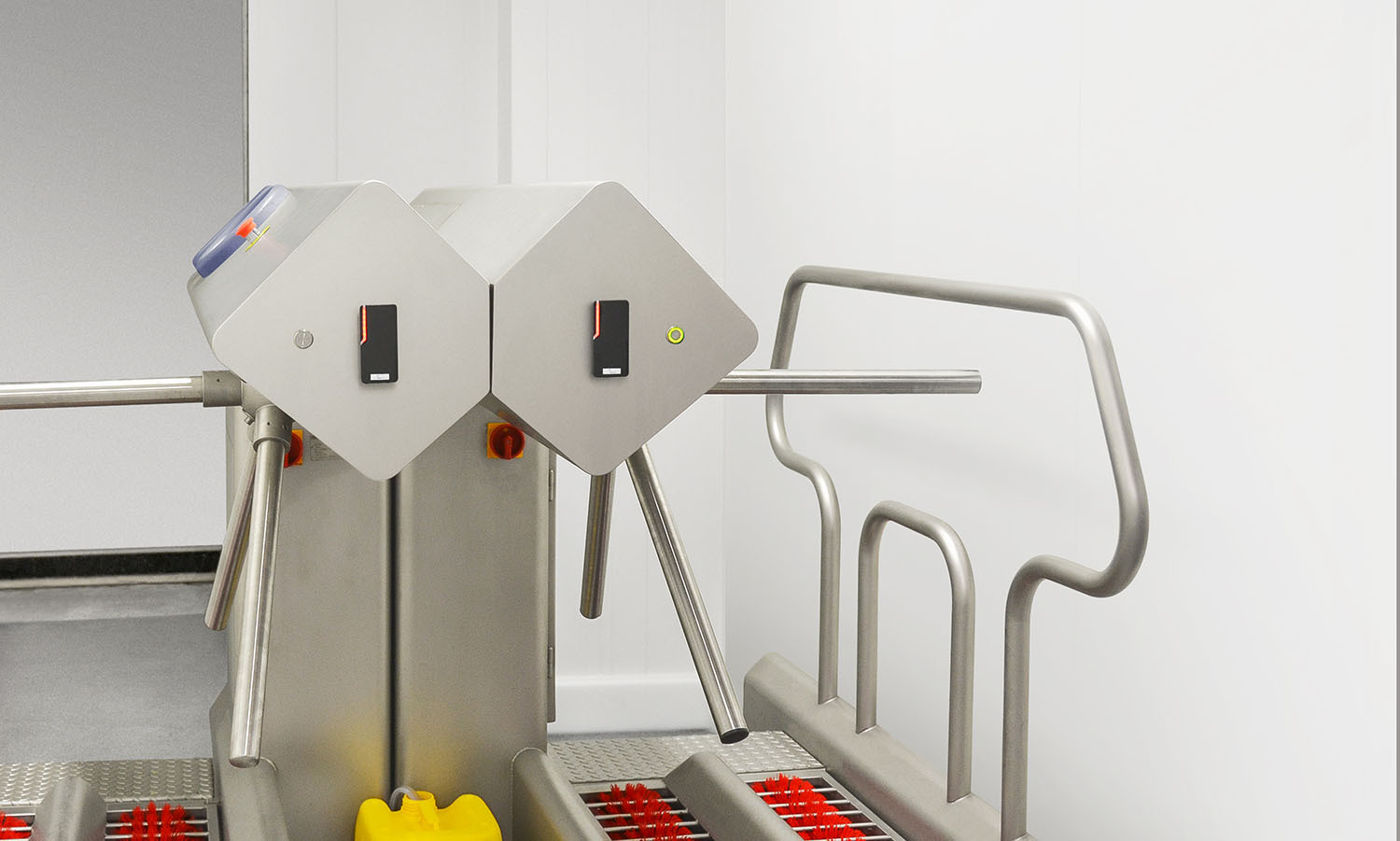
For a good hygiene process, BOONS FIS recommends the following steps:
1. Soap the hands
Soaping hands is the first step in a good hygiene process. In a fully furnished hygiene lock you can make soaping the hands compulsory or otherwise. You can use a soap dispenser with turnstile to making soaping compulsory and the user then has to wash the hands afterwards. Step 2 is then also guaranteed. For somewhat smaller production spaces with lower numbers of people, in many cases a small soap dispenser (automatic or otherwise) can also be sufficient.
2. Washing the hands
After the hands have been soaped they must be thoroughly washed. During this step it is important to avoid contamination. Hence all washtroughs from BOONS FIS are fitted with operating devices whereby the hands do not touch the taps (knee push-button, sensor at knee height or sensor in the tap). More details about this can be found on the washbasins and washing sinks product pages.
3. Drying the hands
After the hands have been washed they must be thoroughly dried. This is done using paper tissues or with an automatic hand dryer. The automatic hand dryer has a whole lot of advantages such as fewer logistical obligations, extremely fast drying, no overflowing paper bins, etc.
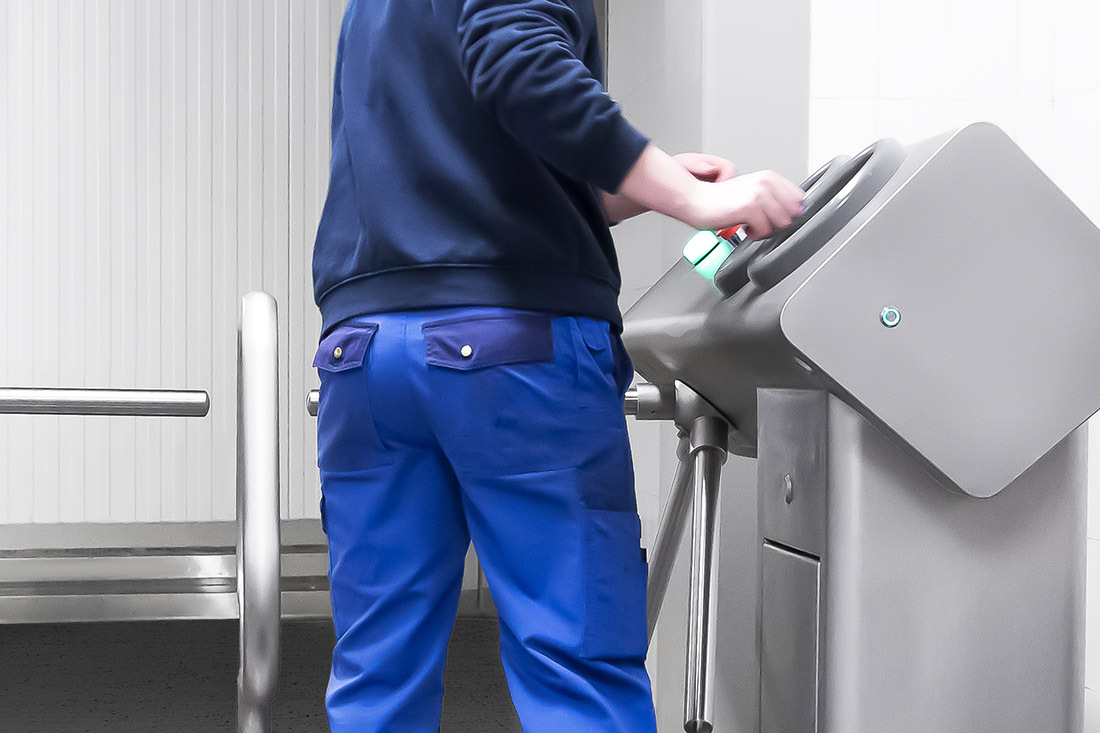
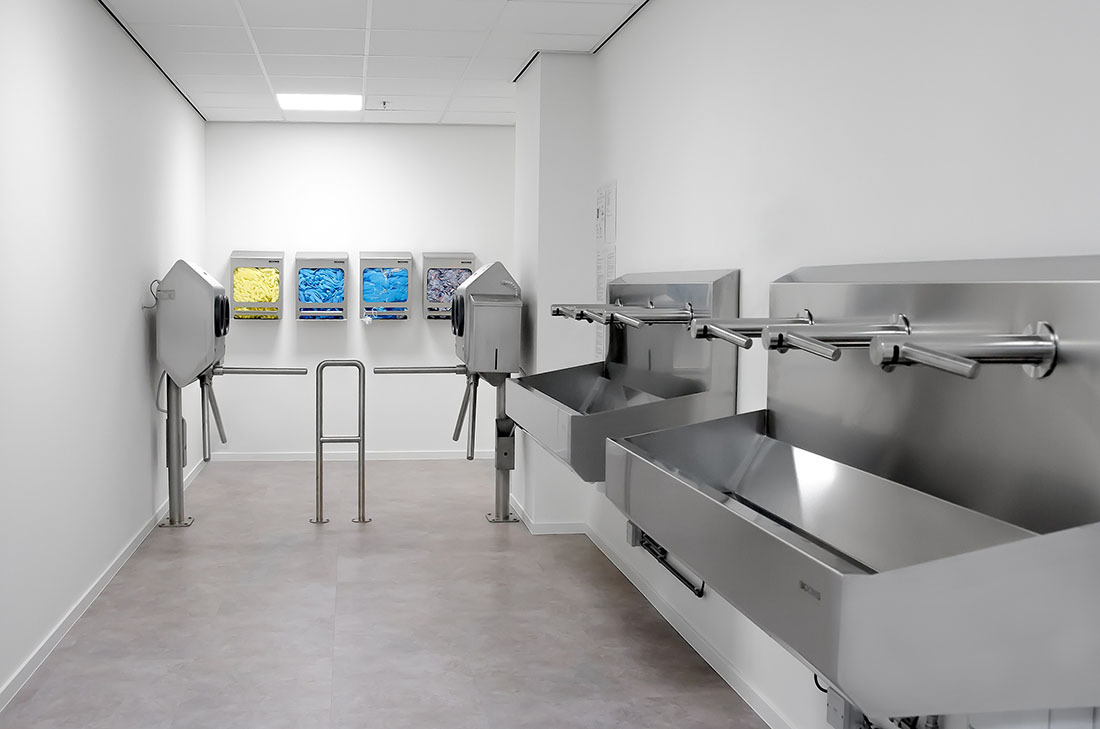
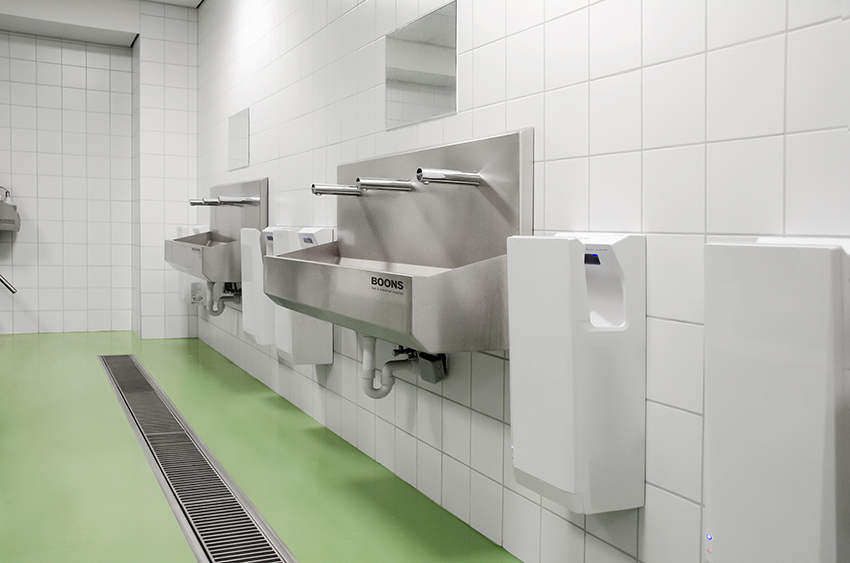
4. Hand disinfection and sole cleaning
Disinfection follows thorough cleaning. A hygiene station is often chosen in which both stages (hand disinfection + sole cleaning and disinfection) are combined as with the best-selling URK hygiene station. The robust and durable turnstile only gives access when the user has correctly followed the cleaning procedure. Here the correct cleaning procedure consists of two stages:
- Hand disinfection with the stainless steel nozzles in the disinfection chambers.
Cleaning and disinfecting the soles with the rotating horizontal brushes (vertical brushes are an option when boots are worn in your production environment).
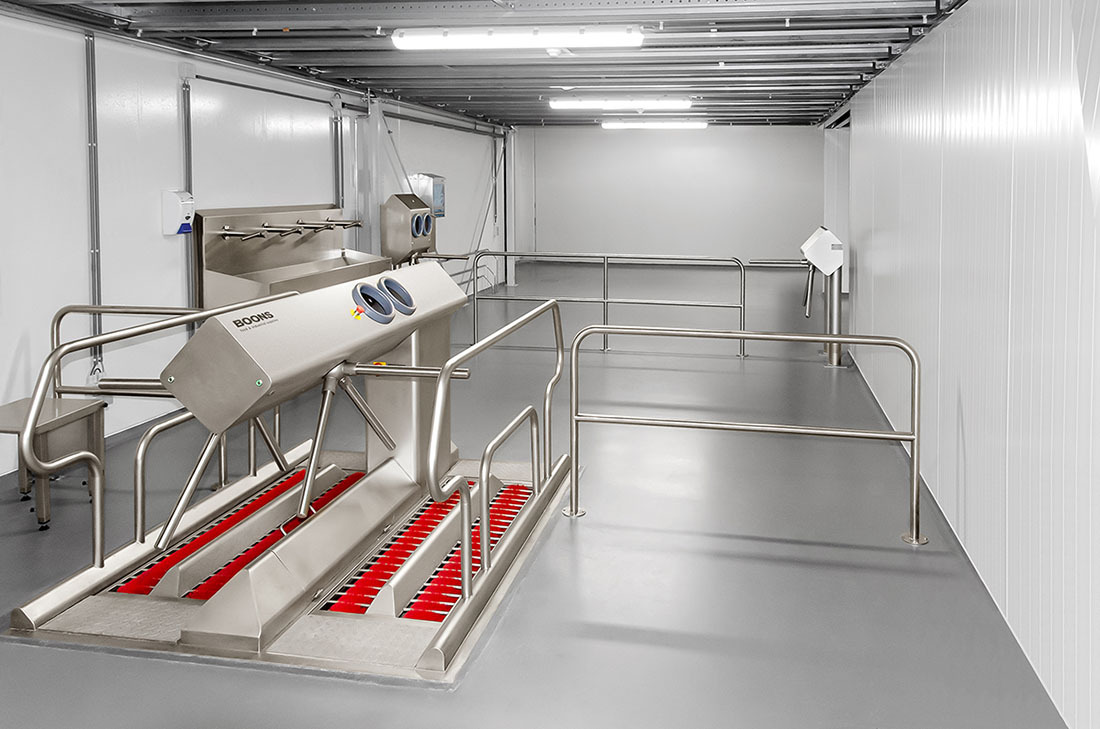
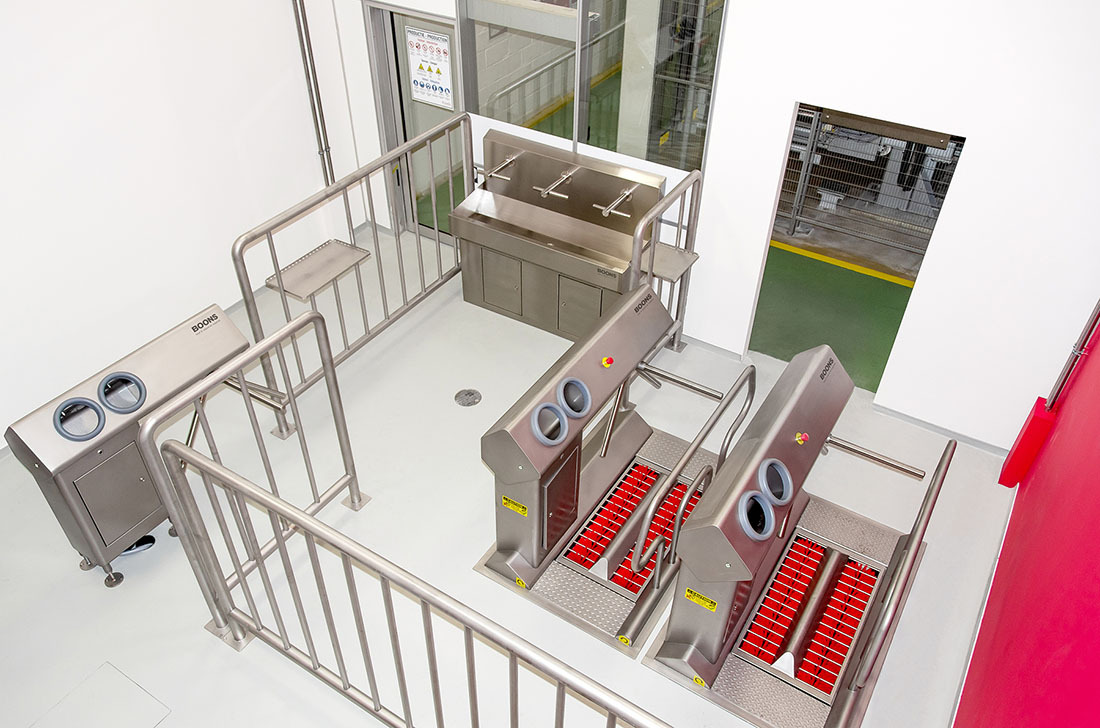
5. Determining the exit flow
The exit flow and flows between are also aspects that require the necessary attention. Do employees have to use the same route to go back out of production or is a separate exit flow to be provided for? Depending on the number of persons passing, the budget and routing at the establishment, one may provide a separate exit flow with separate turnstiles or otherwise.
Want to know more about a hygiene lock within your company? Contact our sales team and together we will see what the possibilities are.
Products in this message

Hand‑washing sinks with Dyson Airblade
Wash and dry hands over the sink. You can wash and dry your hands without touching the tab....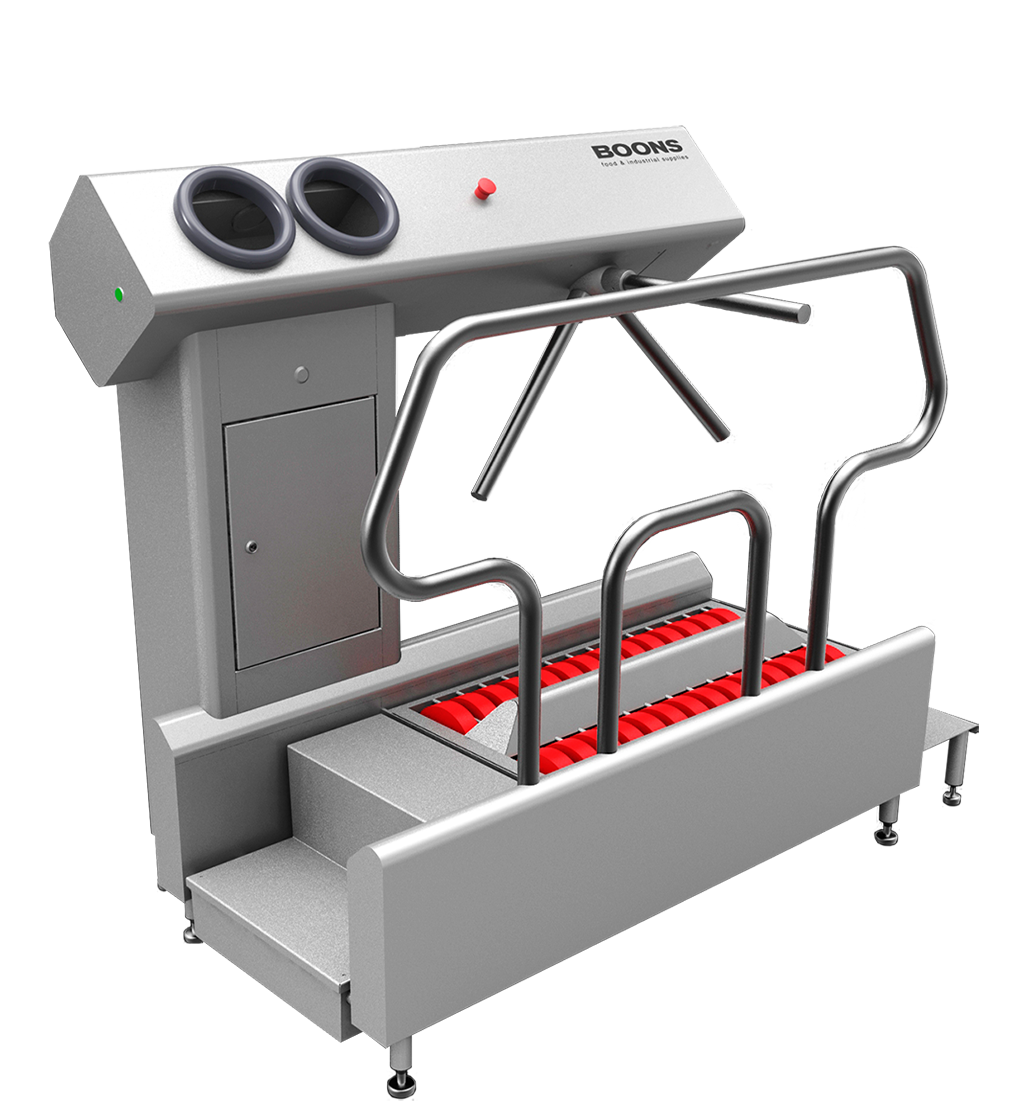
URK hygiene station
The URK is a robust hygiene station that was designed for the controlled passage of employees...
Hand chemical turnstile HDK
The HDK is an automatic dispenser that sprays the disinfectant or soap product on the hands...
